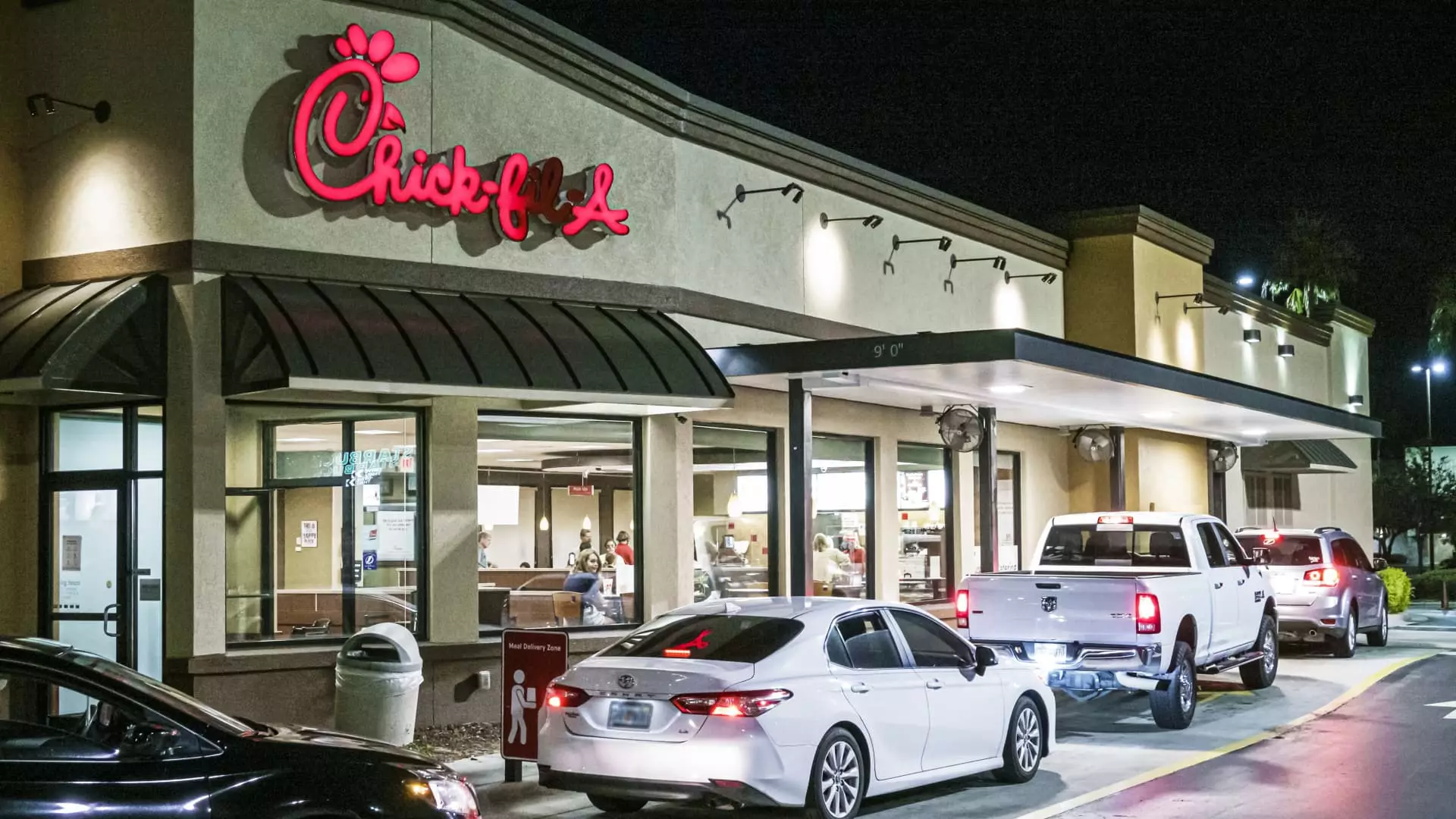Fast-food drive-thru lanes have experienced significant changes in recent times, driven by shifting customer preferences and the impact of the pandemic. An annual study conducted by Intouch Insight reveals that drive-thru times have been reduced, indicating a decline in customers opting to order from their vehicles. However, this trend has also brought about new challenges and opportunities for fast-food chains to enhance service and meet evolving demands.
According to the Intouch Insight study, the average total time spent in a drive-thru lane decreased by a significant 29 seconds this year. Moreover, the time taken for customers to place their orders was 25 seconds shorter compared to previous periods. This improvement can be attributed to a reduction in the average number of cars in line, which plummeted from 2.76 to 1.27.
The study analyzed approximately 1,500 locations of popular fast-food chains, including Arby’s, Burger King, Carl’s Jr., Chick-fil-A, Dunkin’, Hardee’s, KFC, McDonald’s, Taco Bell, and Wendy’s. Taco Bell, KFC, and Carl’s Jr. emerged as the brands with the fastest overall drive-thru times. However, when accounting for the number of cars in line, Chick-fil-A, McDonald’s, and Wendy’s outperformed the aforementioned chains. This indicates that the slower drive-thru times of the latter brands were a result of greater popularity rather than inefficiency.
The COVID-19 pandemic compelled customers to shift from ordering inside restaurants to utilizing drive-thru facilities. This change in consumer behavior persisted even after fast-food chains reopened their dining rooms. While the surge in drive-thru orders was a positive development for businesses, it posed challenges for workers, who had to cope with increased pressure to assemble orders swiftly and accurately. In response to the demand, fast-food chains implemented solutions such as curbside pickup for mobile orders.
Despite efforts by industry leaders, this year’s drive-thru times still lag behind the times recorded in 2019, with a difference of 15 seconds. Many consumers have now transitioned to online ordering or using self-order kiosks within the restaurants themselves. In light of these changes, fast-food companies such as McDonald’s and Chick-fil-A are continuing to prioritize the improvement of service speed and accuracy. Some brands are even experimenting with artificial intelligence software to automate the ordering process, while others are constructing new restaurant locations with multiple drive-thru lanes.
To further explore the evolving landscape, Intouch Insight’s mystery shoppers visited two unique restaurants this year. Firstly, they assessed a McDonald’s test restaurant near Fort Worth that featured an order-ahead lane and a traditional drive-thru lane. Additionally, they evaluated a Taco Bell location in Brooklyn Park, Minnesota, equipped with one standard drive-thru lane and three additional lanes specifically designated for delivery drivers and customers who placed orders in advance. Surprisingly, both of these establishments outperformed their respective brands’ average service times by approximately one minute. The Taco Bell restaurant also achieved an impressive order accuracy score of 88%, surpassing the chain’s overall rate of 85%. However, the McDonald’s test location fell short with an accuracy score of 80%, which was below the chain’s average of 88%.
The fast-food drive-thru landscape is undergoing a transformation as customer preferences continue to evolve, and the effects of the pandemic still linger. With a decrease in drive-thru times and a shift towards online ordering, fast-food chains are adapting to meet the changing needs of consumers. The industry remains focused on enhancing service speed and accuracy through various strategies, including artificial intelligence and the construction of multi-lane drive-thru locations. By recognizing and responding to these shifting dynamics, fast-food chains aim to ensure customer satisfaction and maintain a competitive edge in this ever-evolving landscape.


Leave a Reply